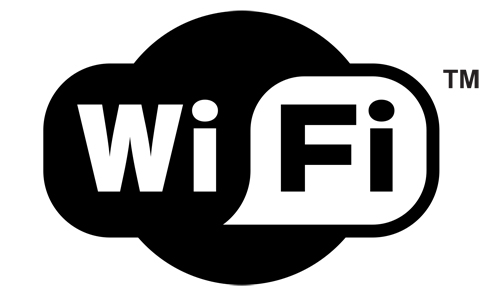What’s the Difference between Bluetooth and Wi-Fi?
Wireless technologies are more and more present in our daily life, but I can tell you that it’s not always obvious to make the difference between all of them. For example, most people don’t really know the differences between Wi-Fi and Bluetooth.
Wi-Fi and Bluetooth are two wireless technologies. While Wi-Fi is mainly used to connect a device to the Internet, Bluetooth is generally used for short-distance connections (for example between a smartphone and headphones).
After this first quick answer, we’ll now look at each technology in details (operating mode, benefits, etc.) and finally compare them
Wi-Fi

Definition
A facility allowing computers, smartphones, or other devices to connect to the Internet or communicate with one another wirelessly within a particular area.
Lexico
This definition doesn’t bring more information in addition to what I already wrote in introduction
Take note that Wi-Fi should be written with a “-” between “Wi” and “Fi”
It stands for “Wireless Fidelity”
How it works
The Wi-Fi technology include a operation mode on two levels: physical and logical
The physical part allows the data transmission by emitting and modulating radio waves
The software part does the link between the device and the transmitter
For example, on your computer you can have a wireless card for the physical part (hardware) and the driver allows the computer to translate the operating system messages into radio waves
There are many versions of the Wi-Fi network (or standards)
The name of each version starts with 802.11, followed by two letters
For example, the most common version now, is the 802.11ac
You probably already know this, but the receiver need to authenticate on the transmitter (generally with a password)
Usage
Nowadays, most of the Wi-Fi usage is what we have at home or at work, we use it to access Internet from a “transportable” equipment, like a laptop or a smartphone
More and more devices are now available to connect to a wireless network, like TV, home assistants (Alexa) or even the light bulb
Hardware
The required hardware to make your Wi-Fi works, you don’t need many things: a transmitter and a receiver
Transmitters
The goal of a transmitter is to broadcast the signal on a specific area, to allow users to connect to the Wi-Fi network
- At home, this role is generally done by your Internet router. By default, it provides a network that you can connect to, without any cable
- In a company, we usually find better quality transmitters, looking like a flying saucer, like the Unifi Ubiquiti
- You can also extend the Wi-Fi network reach if you need to cover a larger area, or if you want to enjoy an Internet access in your garden. We called this device a repeater, and you can find them on Amazon by clicking here
Receivers
The receiver allows us to connect to the network broadcast by the transmitter
It’s generally already included in your hardware, so you have nothing else to do about it
If you don’t have one (on a desktop computer for example), or if you have slowness issues (most of the time it happens if you have a high-speed connection like a fiber), you can try a USB key
While buying your Wi-Fi adapter, make sure to pay attention to the announced speed. It’s the maximum speed you can have in theory, but this can do a major difference in the price between two keys
For example, this Linksys adapter is cheaper than the competitors and provide excellent bandwidth, so you can enjoy your fiber speed at its maximum
Bandwidth
Like you may have already understood, Wi-Fi bandwidth can change a lot depending on the hardware you have
On a local network, you can now have a maximum bandwidth close to Gigabit
But it’s a maximal bandwidth, and if you don’t put the money to get the latest technology at each point (transmitter and receiver), you will never get this results
You also need to know that if you have several users (or devices) using the Wi-Fi network simultaneously, you will get a loss in the bandwidth available
But as the main Wi-Fi goal is to provide an Internet access, getting a speed higher than 300 MB/S is generally useless
Reach
About the Wi-Fi reach, it’s almost the same thing
In a classic apartment, you’ll have no issues, Wi-Fi will cover the whole area
In general, you can expect the maximal reach of a Wi-Fi transmitter to 164 ft (ca. 50 m)
But in all depends on the hardware you use, and the house layout
If you have a floor or thick walls, you may need to think about the installation of a repeater (see the hardware part)
Health risks
Like for all the wireless technologies (Wi-Fi, Bluetooth, mobile, etc.), there are still serious doubts about the impact on the users health
While I’m writing this, there is no study clear enough to tell us exactly what to expect about this, but given the assumptions, it’s probably a good idea to pay attention
Bluetooth

Definition
Bluetooth is a wireless technology standard for exchanging data between fixed and mobile devices over short distances using short-wavelength UHF radio waves in the industrial, scientific and medical radio bands, from 2.400 to 2.485 GHz, and building personal area networks (PANs)
Wikipedia
The only thing to remember about this is the short distance
Like I wrote in introduction, the Bluetooth is limited to connect two closes devices
I’ll add more detail about this now
How it works
The Bluetooth technology has also seen several versions, using a simpler naming system, with numbers (Bluetooth 4.1 for example)
Bluetooth is a point-to-point connection. That’s to say that a device (the receiver) can be connected to only one other device (the source)
New technologies have been added recently, to allow several devices to connect to the same hardware. It works by switching quickly between all devices, there is no permanent connection with all of them (that’s why you may sometimes hear some short cuts on audio speaker)
Usage
Due to the short distance it can broadcast (a few feet), we mainly use the Bluetooth in the case where the reach is pretty low
For example to play music on your Alexa speaker, to send files from your smartphone to your computer, or to listen music in your car
For video games, Bluetooth is also more and more used
For example, PlayStation 4 controllers work in Bluetooth, like the official headset
And most of the other brands are now doing the same
Differences between Wi-Fi and Bluetooth
Reach
The Wi-Fi can reach a relatively long distance, about 164 ft (ca. 50 m)
While the Bluetooth reach is really short, probably less than 30 ft (ca. 9 m) to keep a good quality
In the future, Bluetooth will add new versions (version 5 mainly) that could allow us to use it on a longer distance, but no hardware is available for the moment
Bandwidth
The Wi-Fi bandwidth with a decent hardware is excellent, you can even expect to get a gigabit (1 GB/S). But we are generally closer to 100 MB/s, what is pretty good
For the Bluetooth, you can rather expect around 3 MB/s, but the goal is not really here
Usage
Usage is different, and it depends mainly on reach and bandwidth
We’ll generally use the Wi-Fi to access the Internet, and the Bluetooth rather for slow connections between two devices (wireless headphone for example)
Multi-users
The Wi-Fi can provide a connection to many users simultaneously, with an inevitable loss in quality
For now, the Bluetooth doesn’t have this feature. On recent hardware, it’s possible, but not simultaneously (most of the time it’s enough, you don’t need to play three songs concurrently from different sources)
Conclusion
That’s it, you now know the essential about the differences between these technologies: Wi-Fi and Bluetooth
I tried to not be too technical in this post, I hope you enjoyed it
Thanks to share if you like this type of content 🙂






